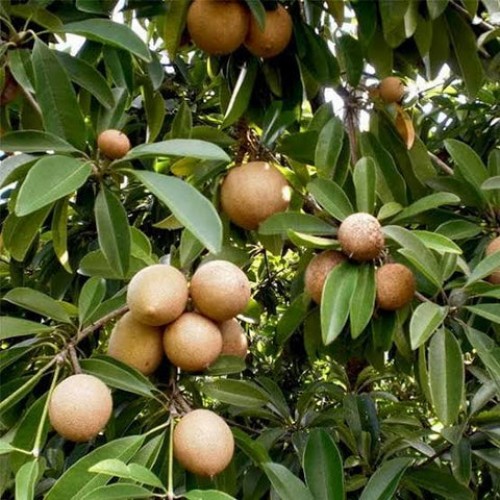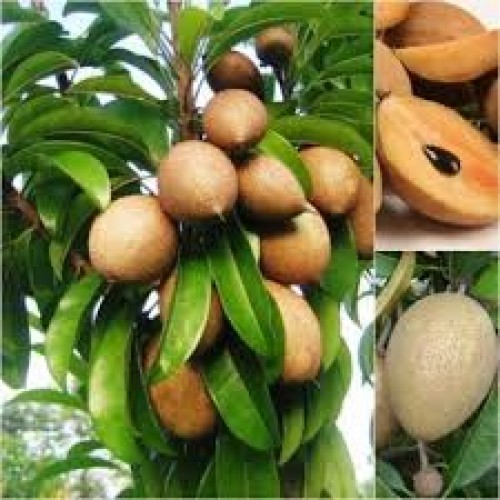off
-
Sold
-

-

out
Cheeku Plant (Sapodilla): A Sweet Tropical Treasure
The Cheeku plant, also known as Sapodilla (Manilkara zapota), is a tropical evergreen tree cherished for its sweet fruit and ornamental value. Originally native to Central America, it is now widely cultivated in India, Southeast Asia, and other tropical regions.
How to Care for a Cheeku Plant
1. Climate & Location
- Ideal Climate: Tropical and subtropical
- Sunlight: Requires full sunlight
- Temperature: Thrives in 25°C to 35°C; sensitive to frost
2. Soil Requirements
- Prefers well-drained sandy loam
- Soil pH between 6.0 and 8.0
- Avoid waterlogged conditions
3. Watering
- Regular watering during early years and dry spells
- Once mature, it becomes moderately drought-tolerant
4. Fertilization
- Apply compost or well-rotted manure biannually
- Use balanced NPK fertilizers during the growing season
5. Pruning & Maintenance
- Prune to shape and remove diseased branches
- Mulching recommended to retain moisture
6. Pests & Diseases
- Common pests: fruit flies, mealybugs, aphids
- Neem oil or organic insecticides can be used for control
Advantages of Growing Cheeku
Nutritional Benefits
- Rich in fiber, vitamin C, and natural sugars
- Promotes digestive health and boosts immunity
Medicinal Properties
- Bark and leaves have anti-inflammatory and antibacterial uses
- Traditionally used to treat diarrhea and cough
Environmental Benefits
- Improves air quality
- Conserves soil with deep root systems
Economic Value
- Fruits are in high demand locally and internationally
- Can be a profitable crop for farmers
Aesthetic Value
- Evergreen foliage makes it suitable for landscaping
Conclusion
The Cheeku plant is a rewarding addition to any garden or farm, offering delicious fruit, environmental benefits, and economic potential. With proper care, it can thrive and remain productive for many years.